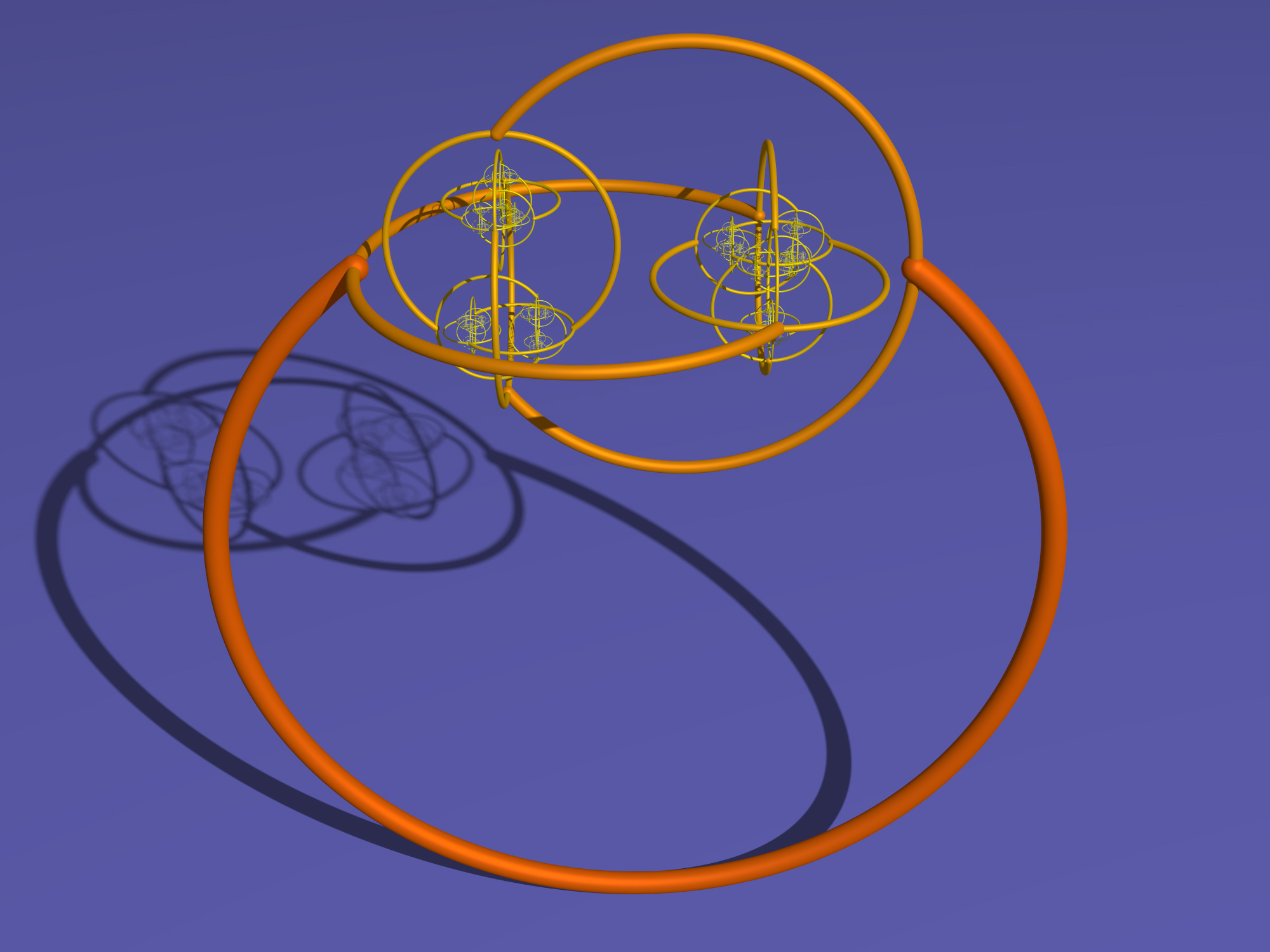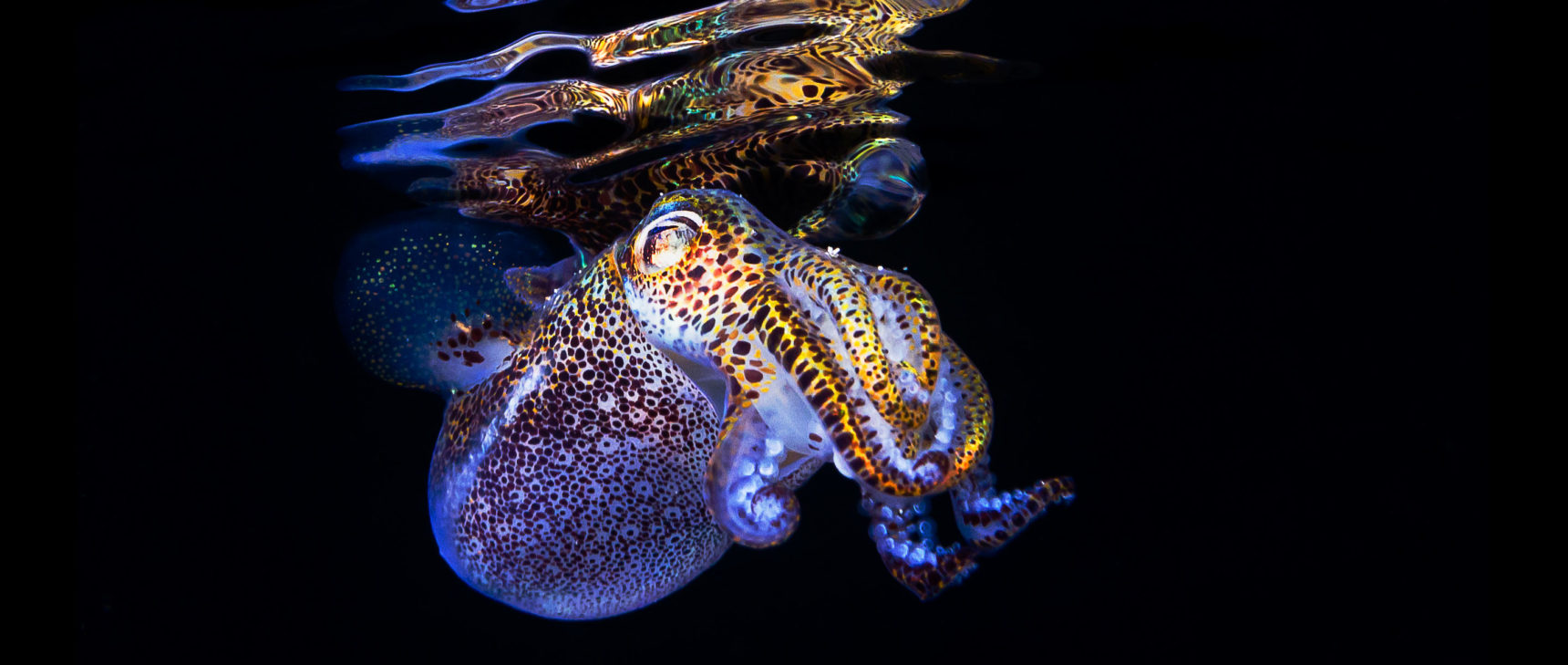Möbius Strips Defy a Link With Infinity
Introduction
In math, three-dimensional space sprawls out to infinity in every direction. With an infinite amount of room, it should be able to hold an infinite number of things inside of it — pearls, peacocks or even planets.
But a recent proof by Olga Frolkina, a mathematician at Moscow State University, shows that one relatively well-known mathematical object can’t be packed an uncountably infinite number of times into an infinite amount of space: the Möbius band, a two-dimensional loop with a half-twist. The result underscores the delicate endeavor of situating surfaces in space, as well as the intuition-challenging nature of infinities.
That’s infinities — plural — as infinities come in different sizes. The smallest infinity is something like the set of natural numbers — what you would get if you started counting 1, 2, 3 and never stopped. The set of natural numbers is countable, as is any group of objects that can be placed in an infinite list. If you were to place an infinite number of pearls (or peacocks, or planets) into three-dimensional space, those pearls would be countably infinite — you could, in theory, list them all, as if each had a serial number scraped onto its side.
Some sets of numbers are too big to be made into a list. The real numbers, for example, include every point on the number line, even the strange ones like π that have endless, non-repeating decimal representations. Using an argument called diagonalization, first introduced by the 19th-century German mathematician Georg Cantor, we can show that even an infinite list of real numbers is incomplete. The set of real numbers is demonstrably larger than the set of natural numbers. It is “uncountably” infinite, or just “uncountable.”
Still, uncountable collections of objects can exist. Imagine, for example, that you’d like to stuff an uncountable collection of cylinders into 3-D space without having any cylinder touch another. To do this, you’d just put all the cylinders on the same axis and give them different widths, with each width corresponding to one of the uncountably many points on the number line. The cylinders would nest inside each other like an uncountable set of Russian dolls.
At first glance, it may seem as though the situation should be similar for Möbius bands. But if you make a Möbius band and try to nest a second one inside it, you will find that the second band ends up on the outside of the first by the time you finish.
In fact, if one band stayed inside the other consistently, that would give the band an orientation, a consistent way to assign inside and outside. And that can’t be, since the Möbius band is the most tangible example of a non-orientable manifold, a mathematical object on which you can’t fix a notion of inside and outside that will stay consistent as you travel around the space.
The fact that the bands cannot nest the same way cylinders do does not mean there is no other, cleverer way to embed them, however. It’s not a proof that it can’t be done. But it does give us an idea of how the situations for cylinders and Möbius bands differ.
Frolkina’s results are firmly rooted in a field called point-set topology. In the 1950s and 1960s, mathematicians proved an assortment of theorems about how to fit objects such as disks (filled-in circles) and spheres (hollow, like a beach ball) into three-dimensional space.
In a sense, the researchers were making a mathematical abstraction tangible. The field of topology is something like coarse geometry: Precise shapes and distances do not matter so much. The large-scale structure is the important thing.
Geometrically, a two-dimensional sphere is the set of all points precisely the same distance from a common central point in space, like the skin of a beach ball. Topologically, a sphere is anything you can get by squishing or stretching that perfect beach ball in some way without tearing or gluing it. The precise way of situating that topological sphere in space is called an embedding. A sphere can be embedded in three-dimensional space in many different ways, since it can be perfectly round, like a soap bubble, stretched like a sausage, or wobbly and smushed like the cell membrane of an amoeba. These shapes all satisfy the definition of a sphere.
These examples of embeddings are known as “tame” embeddings. Tame embeddings extend to the entire space, so it’s possible to stretch or squish the space to make the embedded sphere into a standard round sphere.
“Wild” embeddings, on the other hand, are not so easily visualized and generally require some infinite process to describe. With a wild embedding, there is no way to transform the space to make the wildly embedded version a round sphere.
For example, to make the Alexander horned sphere, you start with a torus — a shape like the surface of a doughnut — and remove a slice. Attach two interlocking smaller tori, one on each side of the gap left by the slice, and repeat the process, slicing each torus and inserting an interlocking pair of smaller tori that you will subsequently slice and insert even smaller tori into. The Alexander horned sphere is what you get after performing this replacement process infinitely many times. Although it is not trivial to verify, the object is topologically a sphere, but it is wildly embedded. Zooming in, you see nearly interlocking “horns” at smaller and smaller scales.

The Alexander horned sphere has a “wild” embedding.
Such wild embeddings can be hard to stuff into space. Back in the middle of the 20th century, the mathematician R.H. Bing proved that an uncountable infinity of spheres and tori can be embedded into three-dimensional space without overlap if the embeddings are tame but not if they are wild. Yet disks are a different story: It’s possible to embed uncountably many non-overlapping disks, both wild and tame.
So what about Möbius bands? In 1962, the Russian mathematicians Victor Vasilievich Grushin and Victor Pavlovich Palamodov showed that uncountably many tamely embedded Möbius bands cannot fit in three-dimensional space without intersecting each other, but the question remained open for wild embeddings.
Frolkina built on their work, and that of Bing and other American point-set topologists, to extend the result to wildly embedded Möbius bands. In her paper, she dissects embedded surfaces and analyzes the way those dissected pieces can lie in space.
Frolkina also looked at the analogous problem in higher-dimensional space. Here she considered non-orientable manifolds of n dimensions, where n is three or greater. She showed that only countably many of these manifolds can fit tamely into a space of n + 1 dimensions.
Her work didn’t cover wild embeddings for these higher-dimensional cases. But Sergey Melikhov, a mathematician at the Steklov Mathematical Institute in Moscow who reviewed her paper for the Journal of Knot Theory and Its Ramifications, extended her work in a short paper posted on the preprint server arxiv.org. Using algebraic techniques, which are more abstract but in this case more powerful, Melikhov removed the tameness restriction on Frolkina’s higher-dimensional work. Together, the papers show that it’s impossible to squeeze an uncountably infinite number of non-orientable manifolds into space using either tame or wild embeddings.
Point-set topology is not as fashionable as it was in the ’60s, but some open questions in knot theory, a more active area of topology research, have what Melikhov calls a “point-set flavor,” and a deeper understanding of wild embeddings could prove useful in that area. In knot theory, wildness is in some sense generic — most knots are wildly embedded in the ambient space. These wild embeddings intrigue Frolkina because they push the limits of what humans can understand. “It is always interesting to look at what is behind our usual boundaries,” she said. Topologists often restrict their research to questions about more well-behaved spaces, but “when you find a wild object, or an object that contradicts your intuition, it is a turning point.”
This article was reprinted on Spektrum.de and in Spanish at Investigacionyciencia.es.



